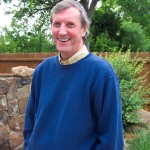
The glorious age of steam locomotives challenged the daily order with their insistent, measured chant and riverboat whistles. They were civilization’s phantom of the opera, prompting approving grins on boys and men, and thousands of country tunes with home spun lyrics of travel and tragedy, preferably by dark of night. Towns reproved them not merely because steam was intrusive and loud, which it most satisfyingly was, but because steam was a fire-and-brimstone colossus that, alarmingly, moved of its own accord, a perpetually impending but useful disaster, a Frankenstein’s monster, unnatural life beyond appeal or persuasion, a necessary neighbor that crushed hapless haywains caught out at crossings.
The glorious age of steam trains attract a different kind of trainspotter. As we thunder through stations, villages, towns and the spring countryside on a 1940s locomotive, farmers, walkers, schoolchildren and even railway maintenance workers watch, wave or take pictures. There’s something about the toot of the chime whistle, the telltale plumes of smoke and the celebrated design that attracts more than the anorak brigade.
The glorious age of steam on the railways in 21st-century Britain is royally approved and there too for all of us to delight in, not only on state occasions but also on high days and holidays. Increasingly we choose to ride behind main line locomotives hauling special trains from Edinburgh to London over Shap Fell or along the Devon coast where rails meet the sea and mingle with steam and salt spray and with the sound of rollers breaking over rocks and the compelling rhythm of a Great Western “king” or “castle” at speed. While many of us, including the Queen and Prince of Wales, remain in thrall to the steam locomotive this most soulful of machines has all but disappeared from everyday service worldwide.
Whatever the future for the glorious age of steam the emotional pull and aesthetic tug of this enchanting machine is unlikely to ever go away completely. In 1739, as the steam engine itself was first forged in the crucible of the Industrial Revolution, French engineer Bernard Forest de Belidor wrote: “Here is the most marvellous of all machines of which the mechanism most closely related is that of animals.” British engineer David Wardale likens the elemental forces at work in a steam locomotive to “the power of a thunderstorm”, contrasting this with “the monotonous drizzle of our ever more synthetic world”.
The glorious age of steam locomotives lives on in the activities of those featured in this piece – including the one from the top of the page, 99-7241-5 shown departing Wernigerode station in the district of Harz, Saxony-Anhalt, Germany, on one of the many scenic routes for tourists. Bon voyage!
H/T AMERICAN DIGEST for the lead illustration

 Link To DennisGHurst.com
Link To DennisGHurst.com


